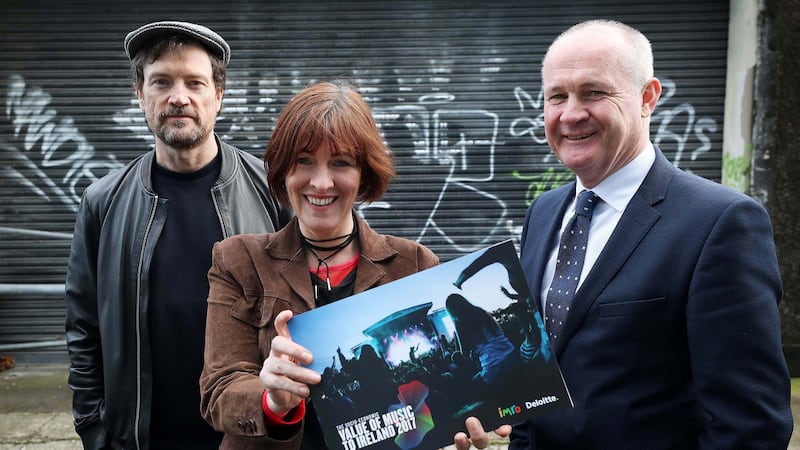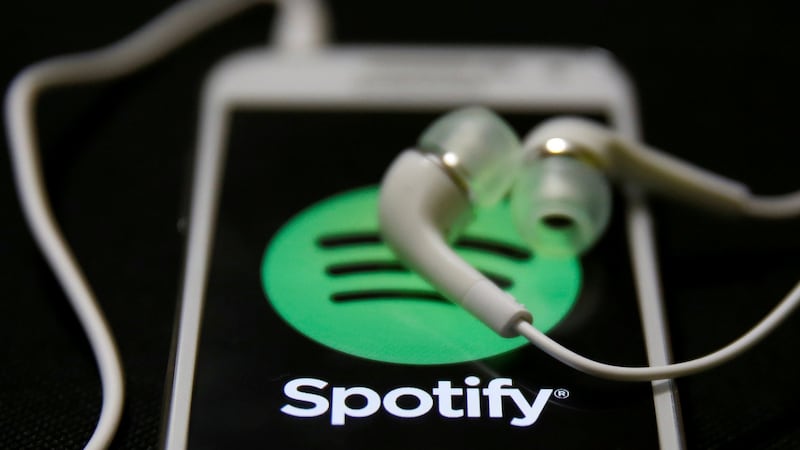The headline figures in the latest report by the Irish Music Rights Organisation (Imro) are impressive. In 2015, the latest year for which numbers are available, the report claims that the music industry supported 13,131 jobs and contributed €703 million, directly and indirectly, to the Irish economy.
This figure, defined as "Gross Value Add" (GVA) in the report, includes "music-related consumer expenditure and supply-chain impacts"; this includes ticket sales for live events, the manufacture and sale of physical media such as CDs, recording studio expenses, and much more. At a press conference, Victor Finn, CEO of Imro, suggested that for every euro spent on music by the State, at least two were returned.
It’s worth looking closer at these figures. Firstly, the jobs. The 13,131 jobs are what is known as “full-time equivalents”, ie there are actually much more than 13,131 people employed by the music industry, but if you add up all the labour hours, you’d get the equivalent of about 13,000 full-time jobs.
This immediately suggests that there are a lot of people making some of their money from music, but not nearly as many making enough to fully sustain themselves.
Michael McMahon, a senior manager at Deloitte, who oversaw the creation of the Imro report, says 2,200 people put "professional musician" as their primary occupation in the 2011 census, the latest year for which figures are available.
“The nature of the music sector lends itself to quite a bit of part-time employment,” says McMahon. “We know that many musicians and songwriters will not make a living solely from their creative talents.”
Secondly, the €703 million. It’s a substantial number, but how is it derived? The “core music industry” share in this is €445.4 million, or 63 per cent of the total. The majority of this figure (€224.8 million) comes from a category called “creative works”: it’s the income accruing to artists and songwriters, as well as their agents and managers, from sales, tours and royalties.

Major albums
According to the report, “creative works” is also the “most volatile” section, “as earnings from year to year are highly dependent on the activity of the highest-profile acts”.
Acts such as U2, Hozier and The Script all had major albums and tours in 2015, helping to produce a 90 per cent increase in revenue over 2012, with just a 10 per cent increase in employment.
Unfortunately, these headline figures don’t give much indication of what is happening for average musicians and songwriters. They point to the people at the top doing very well, with somewhat less impressive returns for those below them. McMahon says it’s impossible to separate out the most successful artists and produce a more balanced picture, but also that the income of those outside the 500 top-grossing artists actually grew at a faster rate than those at the very top, albeit from a much lower base.
The knottiest and perhaps most emotive part of the Imro report is a call for increased copyright protection. The main focus in the report is on the impact of YouTube, which does pay royalties to musicians but in a fairly inscrutable, almost derogatory manner.

At the launch, musician Steve Wall read from a royalty slip he'd received from YouTube, noting the £0.97 he'd recently received for 300-odd streams of The Stunning's 1989 single Brewing Up A Storm. Both Wall and Eleanor McEvoy, singer-songwriter and chairperson of Imro, talked about a "transfer of value": a song can provide a valuable amount of data and engagement for YouTube, but musicians aren't seeing their fair share of that value.
They contrast this with the positive effect of legal streaming services such as Spotify, Deezer and Apple Music. Of these, Spotify is far and away the most recognised and successful. Income from streaming services actually overtook that from digital downloads in 2015, and the trend is only going one way. Imro's aim is to make YouTube pay artists in the same way as the streaming services, and to make sure that all these platforms pay musicians adequately.
At the same time, neither Spotify nor YouTube have ever turned a profit. YouTube is bankrolled by Google because it generates so much data and monopolises the attention of hundreds of millions of people worldwide.
Spotify has grown to 140 million active users, including 60 million paying subscribers, but continues to lose money. Its day-to-day operations are only possible because of significant venture capital investments.
Traditional profit
Imro’s Victor Finn suggested this loss-making was just a quirk of Spotify’s business model and no reason to doubt its sustainability or commitment to musicians. Finn is correct in one respect: traditional profit is not the end-goal for a company like Spotify. It is continually re-investing its revenues back into the company with the aim of driving up its valuation before a potential sale or IPO. (It is rumoured that Spotify will be listed on the stock market sometime in the next six months.)

But that isn’t to say the business model shouldn’t be a cause for concern. Spotify – and venture capital-funded streaming services like it – has every reason to minimise the cost of its content. The lower the royalty payments, the more valuable the company becomes to its shareholders – including each of the major record labels.
To convince the major labels to support the platform, Spotify gave them a share of the company. This has an important long-term effect: while labels would be contractually obliged to share streaming revenues with their artists, the value of the stock would remain entirely theirs.
When Spotify is eventually sold or listed, the labels – not the artists – will see the return on that value.
It seems clear that, for now at least, streaming is the future of the mainstream music industry. The major labels have backed it entirely, as have collection agencies like Imro. It is seen as a legitimate way for artists to distribute and receive payment for their work. The rewards can, in certain cases, be significant, and it comes with a very low barrier to entry.
At the same time, musicians should be wary of becoming too reliant on any particular platform. Spotify and its peers have largely solved the problem of music-on-demand, but they have a long way to go before the issue of fair and transparent recompense is resolved.
Play some Amity Cadet: fake artists filling the playlists
It has been widely reported that Spotify's playlists – often seen as the golden tickets for artists wanting to be "discovered" – are increasingly filled with fake artists: essentially stock music.
Take Amity Cadet: one song on Spotify, no other online presence, over 12 million streams. Or the apparently Irish artist Ceilidh: two tracks, no online presence outside of other streaming services, over 20 million streams. There are hundreds more examples, on Spotify and elsewhere.
It is likely these tracks, all eerily similar, are created by anonymous composers and uploaded to Spotify by production companies who specialise in creating music for advertisements, films, or other commercial situations. Epidemic Sound, the best-known of these companies, had some of its first successes by providing music for content creators on Youtube. Its outsized presence in coveted and lucrative slots on heavily-advertised, Spotify-curated playlists is a point on which Spotify has refused to comment.
Spotify is leading the way in algorithmic recommendation of music. And it seems to have discovered a huge desire for sedate, instrumental piano music, one apparently unmet by the traditional music industry. It found a way to satisfy that demand through the use of anonymous productions. What are the arrangements between Spotify and whoever owns the rights to this music, which must be generating considerable royalty payments? Spotify says it won't comment on any commercial relationships it has with the labels/production houses that upload music to the platform. It also stated that it does does not commission or create its own music.
One important point is that Spotify doesn’t pay a fixed amount every time a song is played. Let’s say there are one billion total streams on Spotify in October, and two billion in November. Say your band’s song gets streamed 50,000 times in each month. You will receive more money for the October streams than for those in November, because your song had a larger share of the total during that month. (Artists also get paid more for plays by Spotify subscribers.)
So, what happens if the amount of total streams on Spotify is inflated by ghost artists getting hundreds of thousands of streams every month? What does that do to the share of total streams occupied by “real” artists? Again, Spotify declined to comment.










